Arming Asia: More, Better, More Powerful
As part of a major contract, the Austrian company Glock will supply the Philippine army 74860 9-mm pistols Glock 17 Gen4 plus the same number of holsters
Defense spending in Asia is mainly determined by such giants as China, India, Japan and South Korea, whose budgets far exceed the budgets of the countries of South-East Asia. Nevertheless, countries from the “big four” are modernizing their ground forces in order to better respond to threats from other states and threats to internal security.
In 2017, the largest defense budget in the Association of Southeast Asian Nations ASEAN had Singapore (10 billion dollars), followed by Indonesia (8,2 billion), Thailand (6 billion), and Vietnam (5 billion). Malaysia (3,6 billion), Philippines (2,8 billion) and Myanmar (2,1 billion). Brunei, Cambodia, Laos and East Timor are the most modest countries in terms of defense spending.
Identifying trends in individual spending is difficult because countries face different threats and have different priorities. While some countries in Southeast Asia are concerned about the territorial claims of China in the South China Sea, others are fighting the rebels or simply need to modernize their ground forces. Malaysia even reduced its defense budget by 12% to 3,6 billion dollars due to its economic problems.
The military equipment and armaments described in the article give an overview of the processes in the ASEAN countries, although this is by no means an exhaustive account of the projects being implemented.
Indicative business
Singapore is better suited to start the review and is due to recent discoveries at the Singapore Airshow 2018 air show, which took place in February 2018. First of all, ST Kinetics has unveiled its next generation NGAFV (Next-Generation Armored Fighting Vehicle) armored vehicle, the production of which will “soon” begin. The first NGAFV machines will be delivered to the Singapore Army next year, an evacuation option and a bridge-laying vehicle will also be deployed. Singapore does not name the number of vehicles ordered to replace the remaining BTR M113A2 Ultra.
The prototype NGAFV, presented at the Singapore Airshow, was equipped with an Adder M30 remotely controlled weapon module (DUMV), armed with a 30mm Mk44 Bush master II cannon and a coaxial 7,62mm machine gun. The chief engineer of Kinetics Design & Manufacturing's Tracked Technology Center said the idea came from the ground up.
He called NGAFV “the world's first fully digital armored combat vehicle (FVM)”, which is equipped with elements such as a camera system of all-round surveillance and an open architecture that simplifies the solution of aging problems. The monitoring system of the machine provides the convenience of servicing the entire fleet and faster and timely dispatch for repairs. The independent sight of the commander allows you to work in search and shock mode.
The mass of the vehicle ranges from 29 to 32,5 tons, depending on the weapon system and armor level. A promising direction is the integration of unmanned technologies, for example, drones and ground remotely controlled vehicles that will be placed on board. Worth noting that ST Kinetics is working with its American partner SAIC to promote its platform to the US Army for its Mobile Protected Firepower project, where it will receive a 105mm cannon in a Cockerill 3105 turret.
In addition, at the exhibition, the company ST Kinetics showed its advanced combat equipment. It is based on the Individual Eco-Lightweight Equipment (ARIELE) outfit, in which some components are already mass-produced, while others are still under development.
For example, the Personal Reinforced Outer Tactical Equipment Carrier unloading cut from a modern layered material with a laser helps to distribute the load on the soldier through the front and rear flaps, the waist belt and various fastening elements. The Singapore Army began deploying this system under the designation Load-Bearing System; 250 kits received to date. After additional modifications, the military plans to start supplying the serial system to the combat units in stages, starting in March 2019.
Other features of the ARIELE system from ST Kinetics: ballistic protection is provided by extruded polyethylene; dorsal backpack with separate frame; passive-active body cooling system; medical sensors for monitoring the most important indicators of the state of the body; tropical shoes; an exoskeleton capable of unloading up to 80% of the load; and power management system. The head of the division of soldiers' systems at ST Kinetics, Benjamin Ho, said that his company was close to mass production of the latter.
The dummy demonstrates the various elements of the program for the future soldier. In his hands is the 5,56-mm rifle BR18 of the ST Kinetics bullpup scheme
The company also showed off its Stinger quadrocopter, armed with an 5,56-mm Ultramax light machine gun. Ho said the shooting tests began in the 2017 year, but development continues. The goal is to control the system with the help of glasses SHielded ADvanced Eyewear System, on which the image from the quadcopter sight and the display of augmented reality will be displayed. ST Kinetics is also working on a micro-UAV control system using brainwave waves.
At the same exhibition, the company introduced the 5,56-mm rifle BR18 based on its own prototype Bullpup Multirole Combat Rifle. One of the innovations has become a more traditional trigger. Cocking handles, fire mode switches and magazine eject buttons are located on both sides for ease of use with the right and left hands. After the qualification tests conducted in the middle of the 2017 of the year, the BR18 rifle is ready for production, but apparently the Singaporean army has no plans to use it in order to replace the standard SAR 21. The new rifle has a length of 645 mm and weighs without a magazine 2,9 kg.
Among the new products for the Singapore army, it is worth noting the multifunctional sighting system of the commander, installed on Tanks Leopard 2SG. The sight was developed by STELOP, partly owned by ST Electronics. He replaced the PERI-R17 A2 sight, which was installed as standard on most Leopard 2 tanks. The new device provides a wider field of view and high accuracy, includes a thermal imager, a laser rangefinder and improved optics.
The Singapore Army for its infantry units also adopted the Rafael Spike Short Range (SR) missile. The rocket was first shown as a standard weapon for a combat unit in May 2017; the country, apparently, was the first foreign customers of this anti-tank missile. The Spike SR missile system, designed primarily to combat MBT, has replaced the 84-mm grenade launcher by the Carl-Gustaf Swedish company Saab. Singapore, with 1999, already has a longer-range Spike LR missile system in service.
Various plans
For the first time last October, the Indonesian army showed to the general public a prototype of a medium tank equipped with a Cockerill 3105 turret with a 105-mm CMI Defense cannon. It is developed by a joint venture organized by the Turkish FNSS and the Indonesian RT Pindad, with tactical and technical characteristics approved in November 2016. The director of the company RT Pindad said that the production of the tank should begin this year and 100 machines will be manufactured to fulfill the priority demands of the army. However, the Indonesian army can acquire a total of 300 tanks.
As for wheeled vehicles, PT Pindad started production of the Apoa-2008 1x6 armored personnel carrier in 6, while the Apoa-2 variant appeared in the 2012 year. Another Badak model is based on the latter’s case and is the fruit of cooperation with the Belgian company CMI Defense, which supplied the two-seat turret with the 90-mm cannon CSE 90LP. Badak armored vehicles are manufactured in Indonesia at an annual pace of 25-30 units.
Without much fuss in the press last September, four Steyr Pandur II 8x8 armored vehicles arrived in Indonesia (two with 12,7-mm DUMV, one with 30-mm DUMV and one with 105-mm gun). But it is unclear how much the country is going to purchase such machines.
In February 2017 of the year, it was announced that Indonesia had bought XESUM 18 self-propelled CAESAR 155 self-propelled howitzers. In a press release from the French company Nexter, it says: “In addition to artillery systems, Nexter will also supply its Fire Management System FINDART, CAESAR training equipment for training and more 50 auxiliary artillery battalion machines assembled in Indonesia by our local partner Pindad.” Indonesia signed the first CAESAR howitzer 36 contract based on the Renault Sherpa 6x6 chassis back in the 2012 year.
The Indonesian Marine Corps received the first batch of five Ukrainian BTR-4М 8x8 in the 2016 year. However, there were reports of complaints about the amphibious characteristics of the machines, although Ukroboronexport later denied these allegations and suggested that everything is part of the “fake information war”. The Indonesian Ministry of Defense planned to buy more 50 armored personnel carriers BTR-4M in order to replace outdated BTR-50Ks, but it is not yet clear what the current status of these intentions is.
The joint brainchild of PT Pindad and FNSS is a medium tank Kaplan weighing 35 tons. The machine is equipped with a Cockerill 3105 turret armed with a 105-mm cannon from CMI Defense.
Friend to help
Thailand hopefully turned toward China in order to fulfill the urgent tasks of modernizing military equipment. For example, in March 2016, a contract was signed for the amount of 137 million dollars for Norinco's 28 tanks VT4, which will replace the obsolete M41 light tanks. The first batch arrived in the country in October, six months ahead of schedule. The Thai army equipped VT4 tanks with two battalions of its 3 armored division, stationed in the north-east of the country. These tanks are equipped with VRC-745G / CNR-900Т radio stations produced by the Israeli company Tadiran.
The army purchases a second batch of ten VT4 tanks in accordance with the funds allocated in the budget and hopes to acquire ten more such tanks. In addition, China will build a service and logistics center in Thailand, including Chinese specialists.
The Thai army also chose Chinese floating BMPs VN1 8x8, ordering 34 machines worth 57 million dollars last year. Norinco will supply equipment at the end of this year. VN1 Thai BMPs are equipped with a DUMM with an 30-mm cannon, an 40-mm automatic grenade launcher, a 7,62-mm machine gun and a HJ-73D rocket launcher. The army plans to buy a second batch of VN1 infantry fighting vehicles in the near future, thereby hinting that it is not going to buy additional Ukrainian BTR-ЗЕ1 to existing 222 vehicles.
In 2015, at the defense exhibition, the Institute of Defense Technologies, which is part of the Ministry of Defense of Thailand, presented an experimental model of the Black Widow Spider 8x8 BTR. Following a revision made in 2016, following troop tests, the Black Widow Spider armored vehicle is now ready for further evaluation as a potential solution that will replace the outdated M113 armored personnel carriers and the 85 Tour.
Last year, the Institute of Defense Technologies showed its floating AARS (Amphibious Armored Personnel Carrier) armored personnel carrier with a buoyancy kit and a wave deflector. Designed for moving the assault force from ship to shore, the AARS platform with a mass of 24 tons must meet the requirements of the Marine Corps. The prototype was equipped with an 30-mm cannon mounted in an uninhabited tower developed by Singaporean ST Kinetics. A representative of the Institute said that the platform has a level of uniformity with the Black Widow Spider 90% machine, and its development should be completed in September of this year.
However, the development of an armored vehicle 8x8 to the serial standard is a technically difficult task, and time will tell whether the Thai military will trust in this local development solution.
Bigger and better
The Thai company Chaiseri chose Defense & Security 2017 to show its First Win 2 4x4 MRAP category armored vehicle. At the end of last year, the company delivered the first batch of these advanced vehicles to the Thai army. Deliveries will continue until May 2018, although the director of Chaiseri did not reveal the number of cars. But, according to some reports, this batch consists of more than 100 armored vehicles 100 First Win.
The most significant improvement to the First Win 2 machine was the increased level of protection, and the weight of the original 11 version of tons did not increase due to the use of imported steel. In addition, a digital data bus was integrated, a circular viewing thermal imaging system was installed, and a laser irradiation warning system, possibly connected to the smoke screen, had been installed.
Thailand’s Marine Corps currently operates Cadillac Gage Commando V-150 armored personnel carriers, but this outdated platform does not have enough protection against mines and improvised explosive devices (IEDs) that are actively used by Islamist rebels in southern Thailand.
In order to modernize the V-150, Panus Assembly developed the HMV-150 platform, which has a body made of two-layer armor steel with a thickness of 12 mm and a V-shaped bottom with a thickness of 16 mm. On the updated platform weighing 16 tons also added air conditioning, spotlights, infrared lantern, front and rear video cameras. After operational tests, the Marine Corps began deploying HMV-150 vehicles in the southern provinces of the country last September. If this solution shows itself well in real conditions, then the military can upgrade more 24 machines V-150.
As for artillery, the Marine Corps plans to acquire an ATMG (Autonomous Truck-Mounted Gun) 155-mm L / 52 self-propelled howitzer, part of the ATMOS family of Elbit Systems. The army in 2015 had already bought six ATMG howitzers from Israel, mounted on Tatra's 6x6 chassis. And now the second stage of the ATMG army project has begun, according to which the battalion from the 18 ATMG will be adopted; these systems will be assembled in Thailand.
The Ministry of Defense at the Defense & Security 2017 exhibition also showed the ATMM (Autonomous Truck-Mounted Mortar) mobile mortar complex, being developed in cooperation with the Israeli Elbit Systems. The ATMM complex is a 120-mm Soltam Spear retractable mortar mounted on a Tata 4x4 chassis. The range of the ATMM mortar is 6,5 km, it can make the first shot two minutes after stopping. The weapons production center in Thailand will manufacture ten ATMM systems to equip one mortar company.
Thailand also buys Russian AK-100 series machines, which will begin shipping at the end of 2018. The number of machines will be enough to arm one or two divisions.
Buying on credit
In recent years, Vietnam has focused on enhancing its fleet и aviation. However, the Vietnamese army is finally modernizing its tank fleet by ordering 64 T-90S / SK tanks from Russia. This $ 250 million deal is funded by a Russian loan; The first delivery took place in November last year. The country's needs may increase to more than 200 tanks and therefore additional orders for T-90S tanks are not ruled out.
The Vietnamese army also upgraded X-NUMX T-310 / 54 tanks with a more powerful 55 hp engine, a Russian-developed fire control system, a dynamic protection system and a new 1000-mm gun.
The Z111 defense plant in Vietnam produces OSN-12,7 Russian 96-mm sniper rifles. The Russian company "Design Bureau of Instrument Engineering" apparently transferred technology to simplify licensed production. The same plant produces AKM 7.62-mm assault rifles and Galil ACE 31 / 32 assault rifles by Israel Weapon Industries.
Vietnam and Russia signed an agreement in December 2018 to localize the production of trucks for local and regional markets. Although the emphasis is on civilian models, the plans also provide for the production of specialized military vehicles Kamaz and UAZ. In 2016, Kamaz delivered 550 military trucks to Vietnam, which currently operates around 4500-like vehicles.
The ST Kinetics NGAFV tracked armored vehicle is a high-tech replacement for the M113 Ultra armored personnel carriers of the Singapore Army
Malaysian variety
The Malaysian company DRB-Hicom (Deftech) received in 2011 an important contract for assembling 257 AV8 machines in 8x8 configuration. The agreement worth 559 million dollars provides for the production of 12 variants based on the Turkish platform Pars. The Executive Director of DefTech spoke about the current status of this contract. The 97 vehicles were delivered to the Malaysian army in five versions (BMP with 30-mm gun, BMP with 25-mm gun, armored personnel carrier with DUMV with 12,7-mm machine gun, reconnaissance and version with LCT30 ATGM), and 20 machines will be transferred to the military in November this year. All the cars will be delivered by the end of 2020.
The Malaysian army will equip two regiments with AV8 machines, but the most cost-effective way of equipping two more regiments will be upgrading the existing Condor 4x4 BTR (about half of the original number of 459 vehicles are still in use) to extend their service life by another 15-20 years. In this regard, the company DefTech presented at the exhibition in Bangkok, an upgraded platform Condor.
The development of the upgraded Condor vehicle has been completed and DefTech expects the Malaysian army to make its demands, which may happen this year. The platform, upgraded and improved in collaboration with Chaiseri, is distinguished by better armor protection, a V-shaped hull, independent suspension, anti-wear wheels, digital architecture (including displays and all-round cameras), a Cummins 300 hp engine, more powerful air conditioning installation.
In order to meet the long-term requirements, the Malaysian peacekeeping battalion in Lebanon will replace its Condor 46 vehicles with the International Armored Group’s BTR Guardian. The Malaysian defense minister announced last fall that nine Guardian vehicles would arrive in Lebanon by the end of the year, although they had not yet been delivered.
The Malaysian army also adopted the armored carrier AV4 4x4 jointly developed by DefTech and Chaiseri, based on the First Win armored vehicle. Eighteen AV4 machines, armed with 7,62-mm machine guns M134D Minigun from Dillion Aero, serve in the state of East Sabah, while two more are used for training. Ordered 20 armored vehicles AV4, about 80% of components imported from Thailand, while the final assembly and integration is in Malaysia.
Meanwhile, under the contract from 2015, the last batch of Thales Starstreak missiles will be delivered to Malaysia this year. Missile launchers in the Rapid Rover configuration will be installed on the Global Komited GK-M1 4x4 machine.
In pursuit of success
The Philippine army cherishes rather ambitious plans for the purchase of 44 light tanks under the Horizon 2 modernization program (2018-2022 period) with a budget of 185 million dollars. Deliveries and equipment of the three companies of the motorized infantry division can begin at the end of this year or at the beginning of the next. These machines had previously proven themselves in the bloody battles in the city, when in 2017, the Philippine military recaptured the city of Maravi from Islamist groups.
The technical specifications have not yet been definitively determined, but the BBM should have an 105-mm gun and weigh no more than 35 tons. However, the priorities at the moment have changed and the army is leaning towards the anti-tank installation in the 8x8 configuration with the 105-mm gun. It is clear that various options from Europe, South Korea and Turkey are being considered. Along with the 8x8 anti-tank installation, the Filipinos would also like to have a light tracked tank with an 105-mm cannon. A number of applicants for the latter are limited, although they definitely include the Kaplan machine from PT Pindad and the K21-105 machine from Hanwha Defense, both with a tower from CMI Defense.
Whichever company is chosen to supply an anti-tank unit / light tank, it can count on further cooperation. The Philippine army also wants a wheeled armored personnel carrier with an 30-mm cannon in an uninhabited tower. However, for budgetary reasons, the army may be content with a smaller one, for example, an 6x6 BTR with a combat module with an 12,7-mm machine gun. The Philippine army insists on a high level of uniformity regarding weapons systems and the body of all three types of vehicles, so it will be interesting to watch the development of this program.
The Philippine army also wants to modernize 44 from 114 of its М113А2, they were received under the program of transferring to the other states of extra military equipment and property in 2015. Under the M113 Firepower Upgrade modernization program costing about 20,5 million dollars, a DUMV with an 12,7-mm machine gun will be installed. Five vehicles will be converted into mortar conveyors with Soltam Cardom 81-mm mortar (the installation will also be able to accept Cardom 120-mm mortars if purchased).
Considering that Elbit Systems has already successfully upgraded the 28 of M113 armored personnel carriers (14 received turrets with 76-mm cannons from old Scorpion tanks, four received uninhabited turrets with 25-mm UT-25 guns and six DUMs B with 12,7-mm machine guns), is in a good position and may well get the next contract.
Time to arm
In April 2017, the Philippine Marines received their first three towed 155-mm L / 39 howitzer Soltam M-71 from Israel. Nine more systems were installed later, of which three were transferred to the marines, and six armies. For the first time, the country's Marines deployed 155-mm artillery systems. Elbit Systems won this contract worth 8,3 million dollars in 2015, and additional orders for 155-mm howitzers are expected in the future.
In order to meet the need for small arms, in September 2017 of the Ministry of Defense issued for the Austrian company Glock a notice of acceptance of contract conditions for the supply of 74861 9-mm Glock 17 Gen4 pistol and the same number of holsters. Under a contract worth 24,3 million, the first batch of 35000 pistols was to be delivered in 180 days and the second in the next 90 days.
The managing director of Glock said that this is possibly the largest single order of pistols and definitely the largest in stories order for holsters. Pistols will be delivered through the Glock office in the Philippines. Weapon It will be supplied with 17-charging stores (three for each pistol), Philippine pistols will have a new trigger system standard for Gen5 pistols.
The Department of Defense continues to purchase tactical vehicles and trucks from Kia Motors, by sending a request for 108 tactical machines to a device in 2004. KM 450 4x4 1,25 tons and 37 trucks KM250 6 6 2,5 tons for naval infantry units plus 8% IXNXX 190X250 250 tons for naval infantry vehicles plus 8% IXNXX 34,9 XNUMX XNUMX tons of XNUMX tactical vehicles for the army. The total contract value was XNUMX million dollars. Kia Motors has repeatedly supplied its products to the Philippine military.
Last year, the Turkish company Aselsan delivered 4464 monocular devices A100 to the Philippines for the amount of 15 million dollars. They are intended both for special operations forces and for regular infantry units fighting against terrorists and various factions.
The Philippines’s Horizon 2 program has a variety of weapons and military assets: 832 sniper rifles; 60 long-range sniper rifles; 37744 body protection kit; 79307 helmets: 11000 night vision devices: and an unnamed amount of equipment for protection against WMD. All this property received the highest priority due to the postponement of supplies for the army of EXTRA multiple launch rocket systems from IMI, to which the Ministry of Defense had previously attached great importance.
On the materials of the sites:
www.nationaldefensemagazine.org
www.glock.com
www.stengg.com
www.rafael.co.il
www.fnss.com.tr
www.dti.or.th
chaiseri-defense.com
www.drb-hicom.com
soha.vn
elbitsystems.com
maxdefense.blogspot.com
vpk.name
bmpd.livejournal.com
pinterest.com
www.gettyimages.com
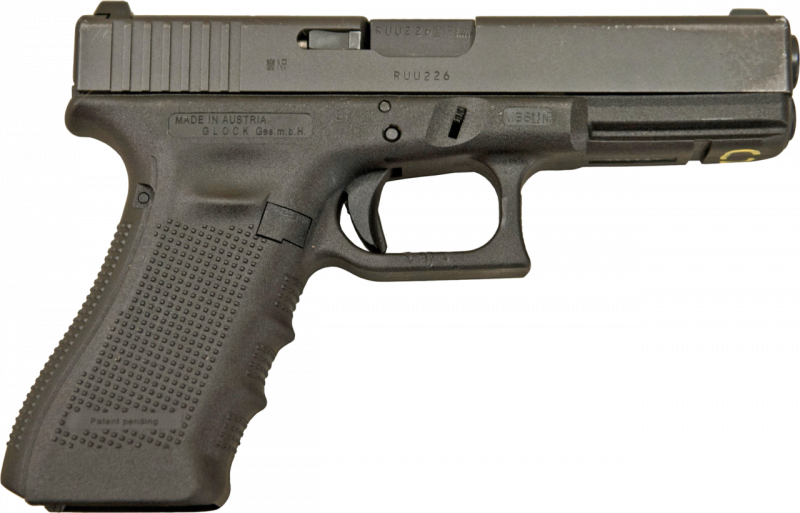
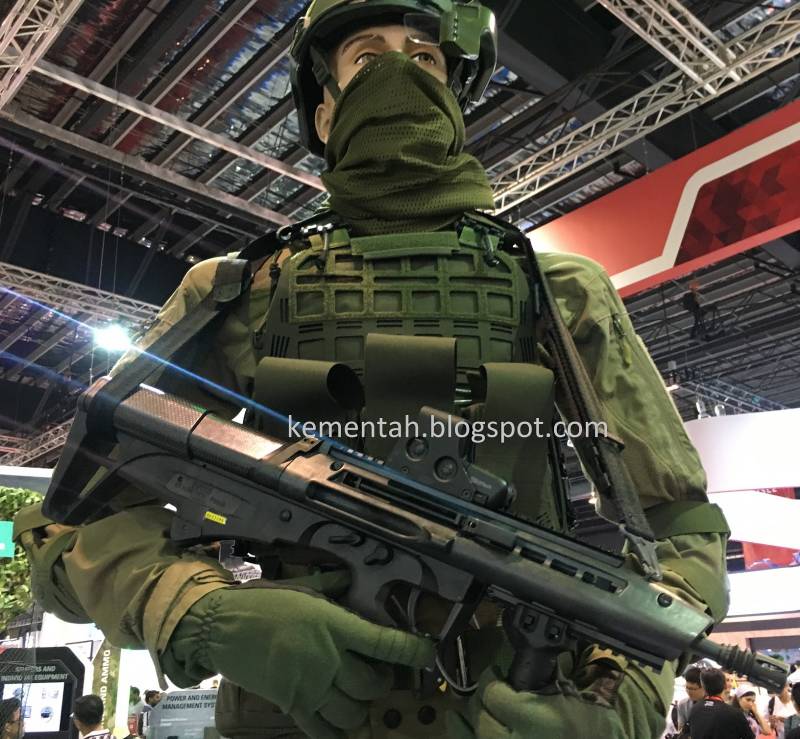
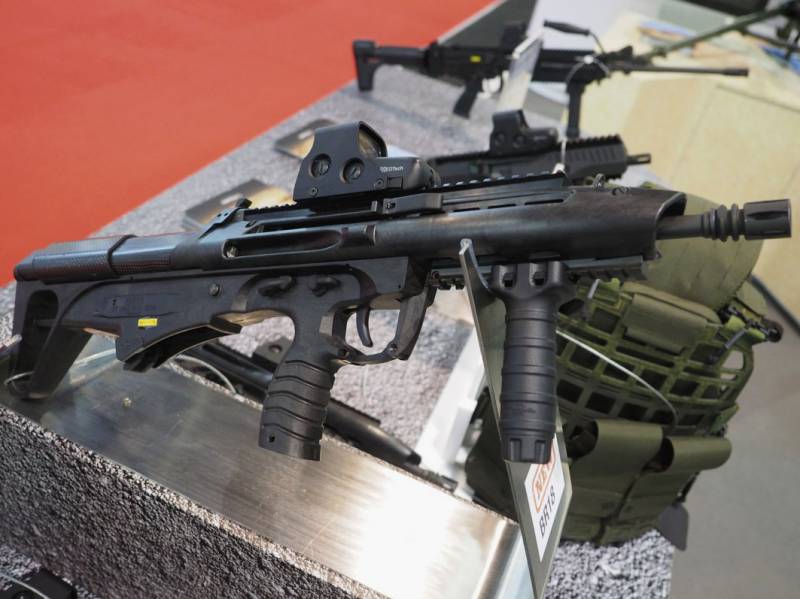
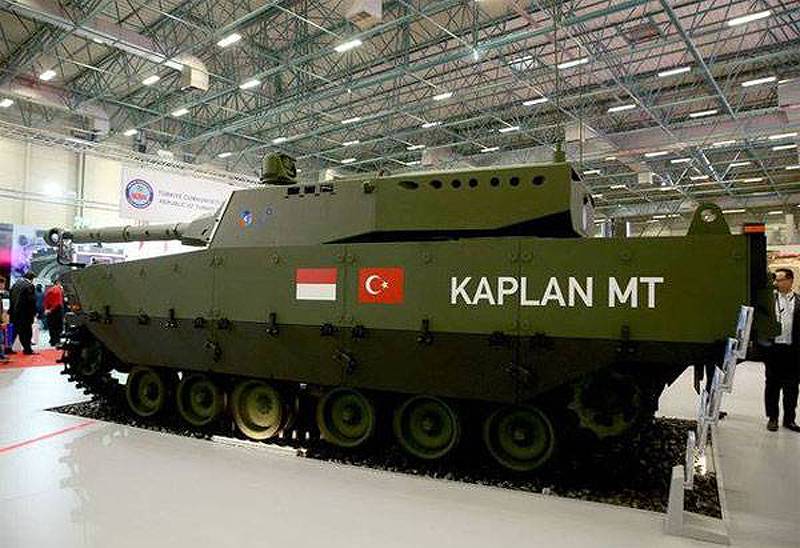
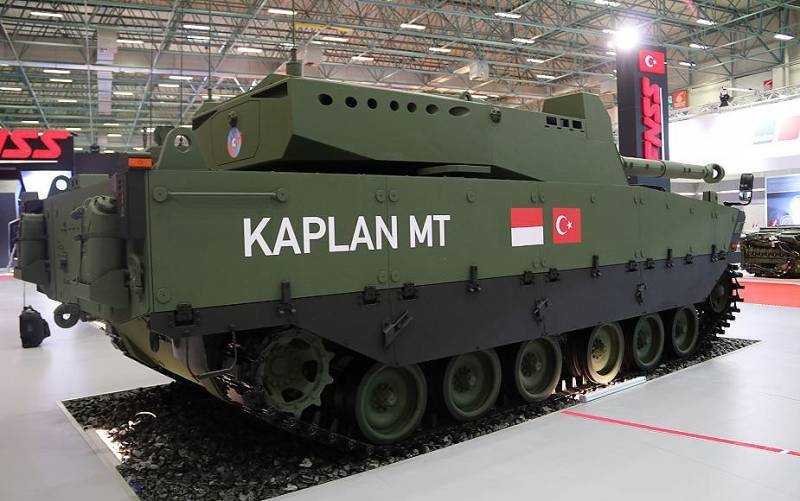
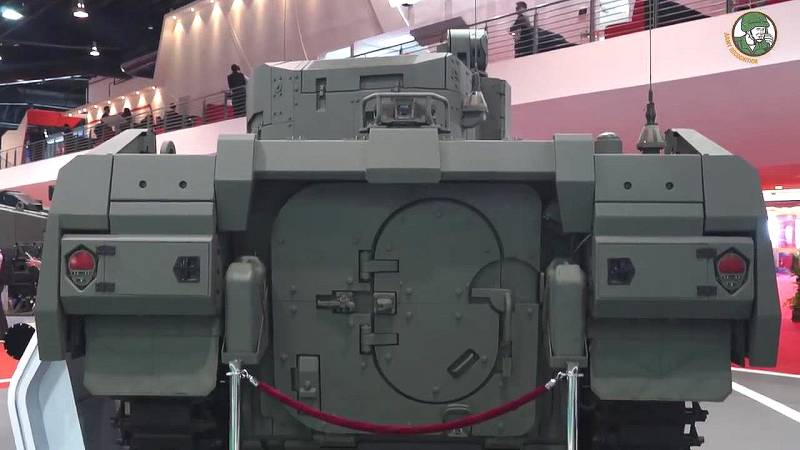
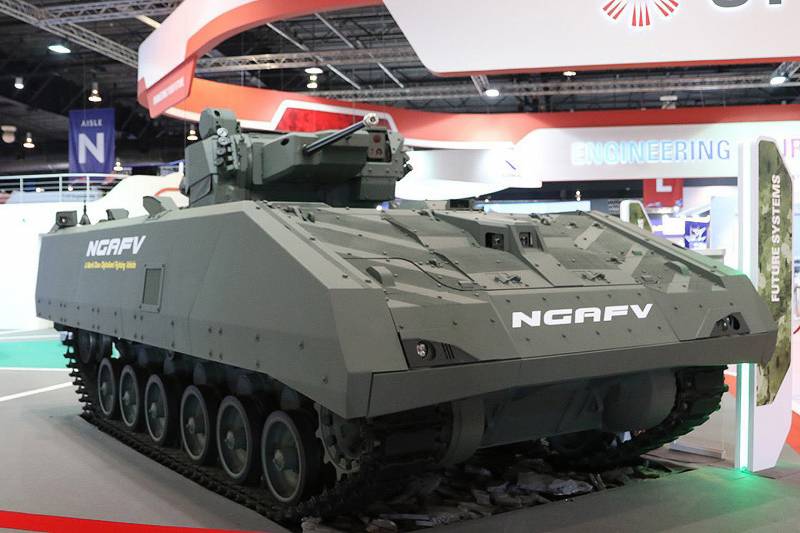
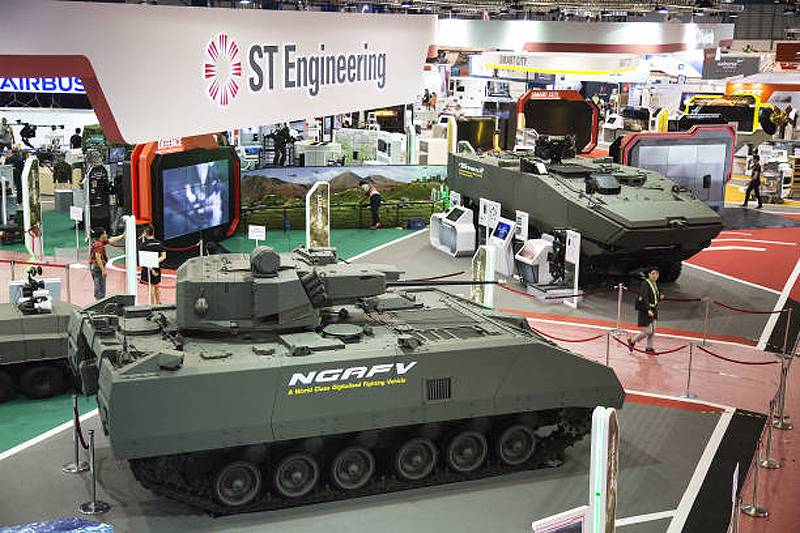
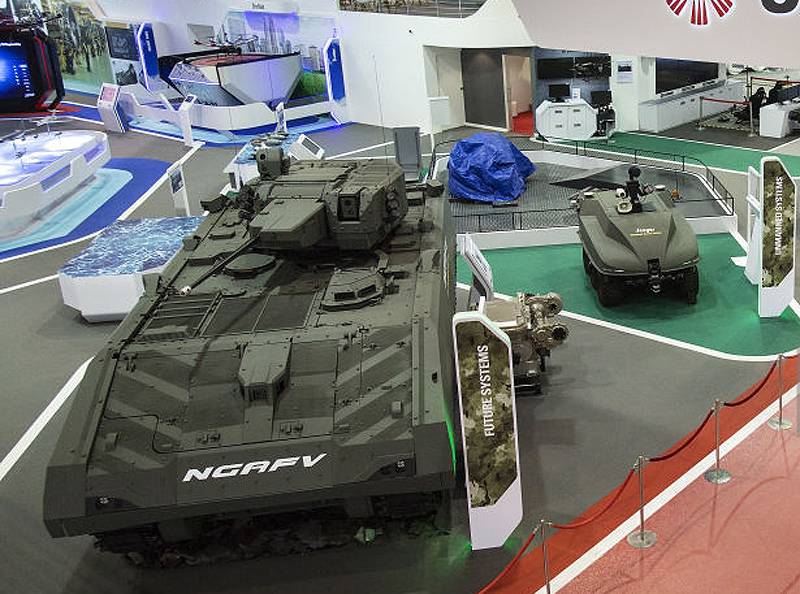
Information